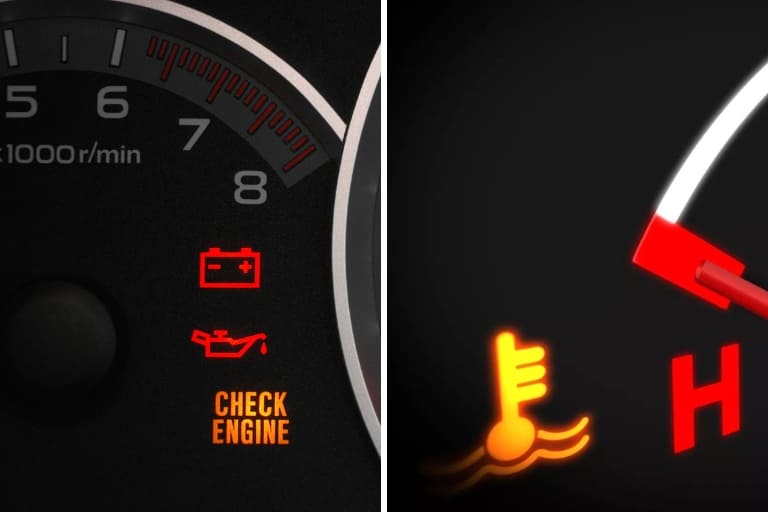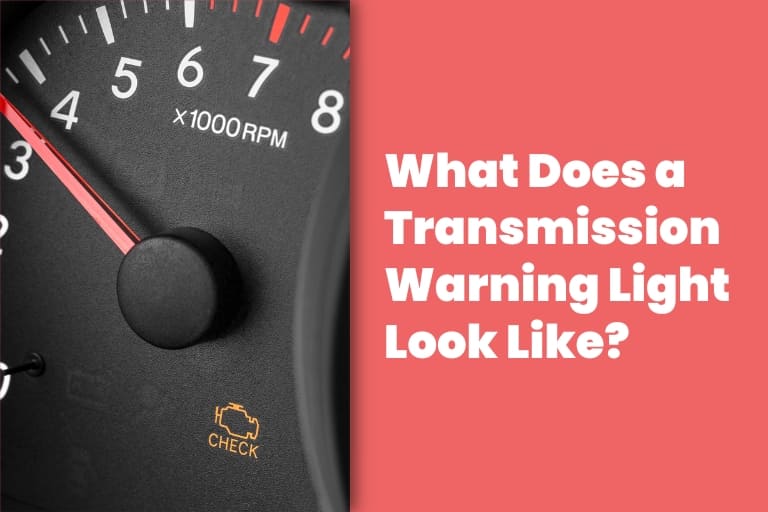When it comes to maintaining your vehicle’s health and lifespan, it’s necessary to be aware of the warning lights and signs that may suggest a problem. Low transmission fluid levels are one such issue that, if not handled, can cause substantial transmission damage.
This article will examine the warning lights and indicators indicating low transmission fluid levels. We will begin by discussing whether or not there is a specific warning light for low transmission fluid and how the vehicle’s onboard computer monitors transmission fluid levels.
Whether you are a car owner or a mechanic, this article will provide valuable information that can help you keep your vehicle running smoothly.
By understanding the warning lights and indicators that may indicate low transmission fluid, you can take the necessary steps to address the issue and prevent potential damage to the transmission.
Warning Lights and Indicators for Low Transmission Fluid
There is no specific low transmission fluid warning light. It varies according to the manufacturer and model of the car. Some vehicles have a dedicated warning light that indicates explicitly low transmission fluid levels.
In contrast, others may not have a dedicated warning light and instead rely on other warning lights or indicators to alert the driver to a potential problem.
For example, some vehicles may have a low fluid warning light on their dashboard. In contrast, others may not have a specific warning light but may still have sensors that monitor the transmission fluid levels and trigger a warning light or message on the dashboard display.
The vehicle’s onboard computer, also known as the Engine Control Module (ECM), constantly monitors various systems and components, including the transmission. The ECM uses sensors to gather data on the transmission fluid levels, and if it detects that the fluid is low, it will trigger a warning light or indicator.
These sensors are typically located in the transmission, measure the transmission fluid level and pressure, and send the data to the ECM. The ECM then compares this data to pre-programmed threshold values.
If the values fall below the threshold, it will trigger a warning light or indicator. This process happens continuously, ensuring that the driver is alerted as soon as possible if the transmission fluid levels fall below the acceptable level.
In addition to a dedicated transmission fluid warning light, other warning lights or indicators that may indicate low transmission fluid levels include the check engine light or the transmission temperature warning light. A variety of concerns, including low transmission fluid levels, might cause the check engine light to illuminate.

The transmission temperature warning light is typically activated when the transmission is overheating, which can be caused by low fluid levels. It is crucial to remember that low transmission fluid levels can cause the transmission to overheat, resulting in transmission and other associated component damage.
If the transmission fluid level is too low, the transmission may not function properly, which can cause the vehicle to shift erratically or not shift at all. This can also trigger the check engine light or a warning message on the dashboard display.
Will a Warning Light Come on For Transmission?
Yes, a warning light will come on for transmission if there is a problem with the transmission. The transmission warning light is a red light with a gearshift symbol. It is usually located on the dashboard near the other warning lights. If the transmission warning light comes on, it means that there is a problem with the transmission, and you should have it checked by a mechanic as soon as possible.
If you see the transmission warning light come on, do not ignore it. Driving with the transmission warning light on can damage your transmission and lead to costly repairs.
Also, read:
- Transmission Fluid Gushing Out: Causes & Solutions
- How to Change Transmission Fluid Like a Pro
- Transmission Fluid Leak when Parked on An Incline
- Transmission Fluid Leaking From U Joint
- Transmission vs Differential Fluid
- Is a Transmission Fluid Leak Covered Under Warranty
- Can You Add Transmission Fluid While the Car Is Off
- Water in Transmission Fluid: Symptoms & Solutions
- How Long Should I Drive Before Checking the Transmission Fluid
- Transmission Fluid vs Brake Fluid: What’s the Difference
- Choosing the Right Fluid: Transmission Fluid vs Coolant
- How to Flush Transmission Fluid from The Radiator
- Problems After Transmission Fluid Change
- Mistakenly Put Transmission Fluid in The Oil
- Can You Lose Transmission Fluid Without A Leak
Conclusion
In conclusion, it’s essential to be aware of the warning lights and indicators that may indicate low transmission fluid levels in your vehicle. As we have discussed, whether or not there is a specific warning light for low transmission fluid can vary depending on the make and model of the vehicle.
It’s important to address low transmission fluid levels as soon as possible to avoid potential damage to the vehicle’s transmission. Leaks, damaged seals, and worn transmission components can all contribute to low transmission fluid levels. If a warning light or indicator is illuminated, it’s essential to diagnose the issue and take the necessary steps to fix it.
Remember that you should always visit a professional mechanic if you have any issues or worries regarding your transmission fluid levels. By taking the appropriate steps to maintain transmission fluid levels, you can ensure the longevity and performance of your vehicle.
